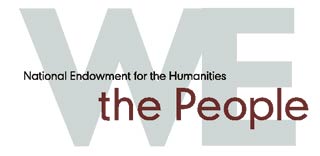On this page:
- Why Is this Site Important?
- How Is this Site Structured?
- Overview
- General Structure
- Topic List
- For Teachers
- Resources
- Feedback
- Funding Source
About this Site
Why Is this Site Important?
The Coming of the American Revolution will ground students’ understanding of the facts relating to the events leading up to the American Revolution, but it will do more. Through introductory essays written in the present tense, letters, diary entries, news accounts, and public proceedings from our collection, it will bring history from the distant past to the immediacy of today.
Teachers who work with the Education Department often tell us that their students fail to appreciate that history recounts a process—a series of human decisions that could have been made otherwise and, thus, could have produced different outcomes; instead, they view history more as a series of preordained events that have simply unfolded over time. As they enter the private thoughts of a people intent upon their rights but afraid that anarchy lay just on the other side of freedom, however, students will come to appreciate not only the intricacies of history but the demands of citizenship.
Through this website, students will develop the crucial skills of gathering evidence and building arguments. Primary sources will help young people appreciate the similarities and differences between their lives and those of their predecessors. Comparing documents will help students identify such phenomena as ideological bias, creative license, and propaganda; discover a more accurate account of an event; fill gaps in the historic record; trace the movement of ideas across populations, time, and geographic space; and comprehend differing points of view about one event. More important, by engaging with primary sources through their critical and creative thinking skills, students will come to understand that documents are not simply illustrations or information conduits but important means to discovery; and they will come to appreciate as well that history is not a static body of knowledge but reflects a dynamic process of decision making.
How Is this Site Structured?
Overview
The Coming of the American Revolution is a multi-layered website that will help students to develop the tools they need to penetrate the motives and understand the actions of the determined individuals who founded a country. It is flexible enough to be a resource for educators and for students working on their own as well.
Specifically, our website will 1) provide an easily understood chronology of key events leading up to the war; 2) present crucial documents relating to those events; 3) offer contextual materials that comprise a cumulative narrative of the period; 4) include suggestions on how teachers can use the documents to convey the immediacy and contingency of historical events; and 5) reveal that the practice of history is a series of approximations, as students compare and contrast differing documentary accounts to arrive at the most accurate view of an incident. Scores of individuals—from MHS staff members, to teachers who have worked with us in the past, to scholars who have embraced our vision—have helped us work toward our goal of immersing students in the “stuff of history.
General Structure
Topic List
The basic site is organized into fifteen Topics that are accessible through the timeline navigation on the Homepage or through the menu. Each Topic is introduced with a contextual essay and is supported by six to twelve significant documents (manuscript or printed) from our collection. For every document there is a high-quality image of all pages, a searchable, printable transcription, and a bibliographic statement. Additional primary materials—e.g., maps, engravings, broadsides, portraits, and images of artifacts—illustrate events as appropriate.
Each document page includes several Questions to Consider, which are designed to aid the students’ understanding of the piece. In addition, Further Exploration questions prompt additional research and activities to immerse students into the drama of the events.
Woven throughout each of the topical pages are excerpts from the diaries of John Rowe (1715—1787), a prominent Boston merchant who expressed allegiance to the Patriot cause but did not go so far as to endorse independence. His diaries span the years 1764—1779 and offer many valuable observations about people, events, and daily life in Boston.
For Teachers
Alignment to Curriculum Frameworks & National History Standards
The content on this site aligns with the Massachusetts History and Social Science Curriculum Framework, as well as the National History Standards for high school students. We have also enlisted the aid of a Teacher Advisory Board that has developed lesson plans for use in history and social science courses, as well as offered suggestions for educators adapting lessons for Language Arts and Middle School classrooms.
Core Concepts
Nine Core Concepts that apply to the site as a whole cut across the fifteen topical areas as broad themes. The
Sample Classroom Lessons
MHS Education staff has partnered with a Teacher Advisory Board to create Lessons based on each of the nine Core Concepts. These lessons model how the site can be used, and offer a way of guiding educators through all the components of the website. This section is intended to be expandable, so that teachers who use the website can contribute their own lesson plans and experiences.
Resources
Supporting materials including, but not limited to,
Feedback
If you have incorporated this site into your classroom, we would love to hear from you. Please
Funding Source
This website has been made possible by a Grant for Teaching and Learning Resources and Curriculum Development funded by the Education Division of the National Endowment for the Humanities (NEH).
Any views, findings, conclusions or recommendations expressed in this website do not necessarily represent those of the National Endowment for the Humanities.



